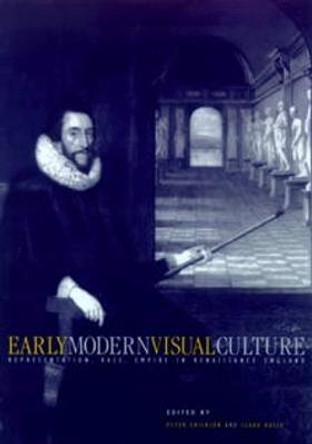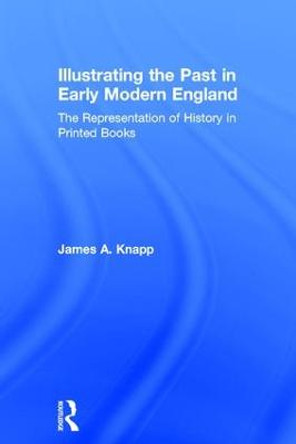Description
Impostors and impostures featured prominently in the political, social and religious life of early modern England. Who was likely to be perceived as impostor, and why? This book offers the first full-scale analysis of an important and multifaceted phenomenon.
Tobias B. Hug examines a wide range of sources, from judicial archives and other official records to chronicles, newspapers, ballads, pamphlets and autobiographical writings.
This closely argued and pioneering book will be of interest to specialists, students and anyone concerned with the timeless questions of why and how individuals fashion, re-fashion and make sense of their selves.
About the Author
Tobias B. Hug is Associate Fellow of the History Department at the University of Warwick
Reviews
Impostures in Early Modern England: Representations and Perceptions of Fraudulent Identities, by Tobias B. Hug (Manchester: Manchester U.P., 2009; pp. 244. GBP60).
This clear, detailed, and well-structured book marshals diverse materials in order to offer the 'first full-scale analysis' of what was a 'multifaceted phenomenon'-thereby addressing the questions: 'who was likely to be perceived as an impostor in early modern England, and why?' (p. 1). Tobias Hug answers the questions through micro-histories, fleshing out lives of various impostors: these include William Fuller (1670-1733), who subsisted on the margins of plots, the aristocracy, and solvency; George Psalmanazar, 'the pretended Formosan' (p. 10); and 'a young Englishman in his mid-twenties, who called himself Arthur', and 'claimed to be the offspring of Elizabeth and Robert Dudley' (p. 96). Leaving aside a discussion of gender impostures on the grounds that these have been considered by many other commentators, Hug organises his material by classifying examples according to socio-economic status, institutionalised knowledge, ethnicity, religion and politics. This kind of taxonomising is necessary since 'Early modern English men and women regarded a wide range of activities as impostures' (p. 204). Problems of definition intensify as 'Impostor and imposture were not considered offences under criminal law' (p. 6).
Having established the 'what', Hug explicates the 'why'. Some impostures were undertaken for 'psychological gratification', some for 'disloyal ambition', and some for 'material benefit' (pp. 205-06). Hug resists seeing impostures 'pressed into grand narratives' (p. 2), but still explores their implications. Often, impostures 'expose fissures and weaknesses' within or between the dominant norms that condition identity (p. 206). For example, during the period in question, Hug asserts, 'no clear visual identification such as uniforms' existed to identify figures from officialdom, making impersonation 'relatively easy' (p. 41). When discriminations did occur, transparency was not inevitable: 'orders that aimed at reinforcing and clarifying social order, such as laws governing dress, enabled deception by giving exact instructions' (p. 20). Determining who or what was 'licensed and unlicensed' (p. 58) only made sense, or was possible, when gate-keepers existed. This was particularly evident in terms of the 'professional self-protection and self-definition' common in 'medical and religious contexts' (p. 207). In both contexts, the 'struggle for power and authority' was also a high-stakes battle for 'knowledge and truth' (p. 64). Yet the urge to police identities, aristocratic, gendered, ethnic, legal, professional, or personal, could lead to order and confusion.
Mindful of this confusion, Hug cautiously observes that the apparent increase of imposture in the period was a result of 'changing terminology and perception', 'the greater availability of print', and 'an increasingly bureaucratic church and state' (p. 3). Hug attributes imposture's subsequent decline to an increasingly sceptical 'intellectual climate', where imposture was seen as a sign of madness, not cunning, and where the state grew 'much stronger ... which left little scope for any individual to challenge it' (p. 104). Do such statements suggest that he is subsuming his micro-histories within those grander narratives which he purports to resist? If so, perhaps this is inevitable-even laudable-given the hard-to-define subject and period in question. Hug admits that the chosen end-point of his study, 1770, is both 'arbitrary' and 'corresponds to some cases only' (p. 11). Yet when discussing imposture up to the 1500s, arbitrariness touches on vagueness:
The problem of the poor and the image of the fraudulent beggar go back to at least the thirteenth century, but as poverty became a major social issue in the sixteenth century across Europe, it became far more high-profile. At the same time, state and church bureaucracies grew, which recoded people in elaborate systems (p. 17).
Leaving aside the confusion generated by the pronoun in the last clause of the first sentence (does 'it' modify the 'problem of the poor', 'the image of the fraudulent beggar', or 'poverty'?), the second sentence might have expanded on what necessitated those recodings (perhaps noting, as possible causes, Protestant reformers' recalibrations of charity, or shifts in land tenure). Furthermore, although a footnote is provided to substantiate these very broad-brush points, it simply cites a couple of pages of Langland, some medieval statutes, two pages from Paul Slack's Poverty and Policy in Tudor and Stuart England (1988; rev. ante, cvi [1991], 458-9) and a 1988 study in German by Robert Jutte, a work which is not included in the bibliography (his more useful Poverty and Deviance in Early Modern Europe (1994; rev. ante, cxi [1996], 977-8) is entirely omitted).
Hug's introduction affirms his interest in 'representations and perceptions of impostors and their deeper meanings', 'the ways impostors and impostures were perceived and represented', how impostors 'perceived themselves' and performed 'self-representation', and how all such perceptions and representations were 'influenced' by 'social, religious, political, intellectual and cultural contexts'
(p. 1). The first four of those 'contexts' are well covered, the last less so. No study can be exhaustive, of course: Hug acknowledges that 'disguise and mistaken identities' were 'striking themes in many a play of the period', but declares 'literary texts will only be considered to a very limited extent' (p. 11). This makes sense in one regard: Hug is not a literary historian-and plenty of them have done work on this. But, when literary texts are invoked to illuminate 'representations' of historical processes, they are not deployed in as illuminating or representative a way as they might have been, despite the high standards which Hug sets himself.
So, yes, Thomas More 'warned against fraudulent beggars' (p. 18) in Utopia (1516). But he also attacked the situations that produced them: enclosure, dispossession, and forced mobility. When Hug asserts that 'literary accounts' of rogues and sturdy beggars are 'suspect' as sources of 'historical evidence' (p. 19), this is true in at least one important sense: they exaggerated the prevalence and coherence of deviant communities. But such texts do provide 'evidence' that there was a popular readership eager to purchase morally ambivalent, pleasurably teasing texts, that exposed the very 'fissures' which, Hug rightly notes, impostures realised. Again, when Hug states that 'rogue literature in Elizabethan England provided stereotypes to reinforce social order', helping with the 'unmasking of criminals' (p. 17), this is true; but they also showed how ingenious imposture was, and how inept authorities were at stopping it. If, as Hug claims, 'Elizabethan writers of rogue literature conceived of beggars as inverted images of themselves' (p. 180), they also saw themselves and their increasingly mobile, unsettled audiences in that mirror image. As Cuthbert Cony-Catcher says in Robert Greene's The Defence of Cony-Catching (1592), when you 'cannot dissemble' (as a tricksy pamphleteer or as a disguised con-artist) you 'cannot live'. In his own way, Hug usefully recovers, records and reconceptualises much fascinating and useful material in this study. As such, the book is welcome, as is its capacity to occasion further debate, especially when read alongside a work which Hug does not cite (in the recent English version, at least): Valentin Groebner's Who are You? Identification, Deception and Surveillance in Early Modern Europe (2007).
Book Information
ISBN 9780719079849
Author Tobias Hug
Format Hardback
Page Count 256
Imprint Manchester University Press
Publisher Manchester University Press







